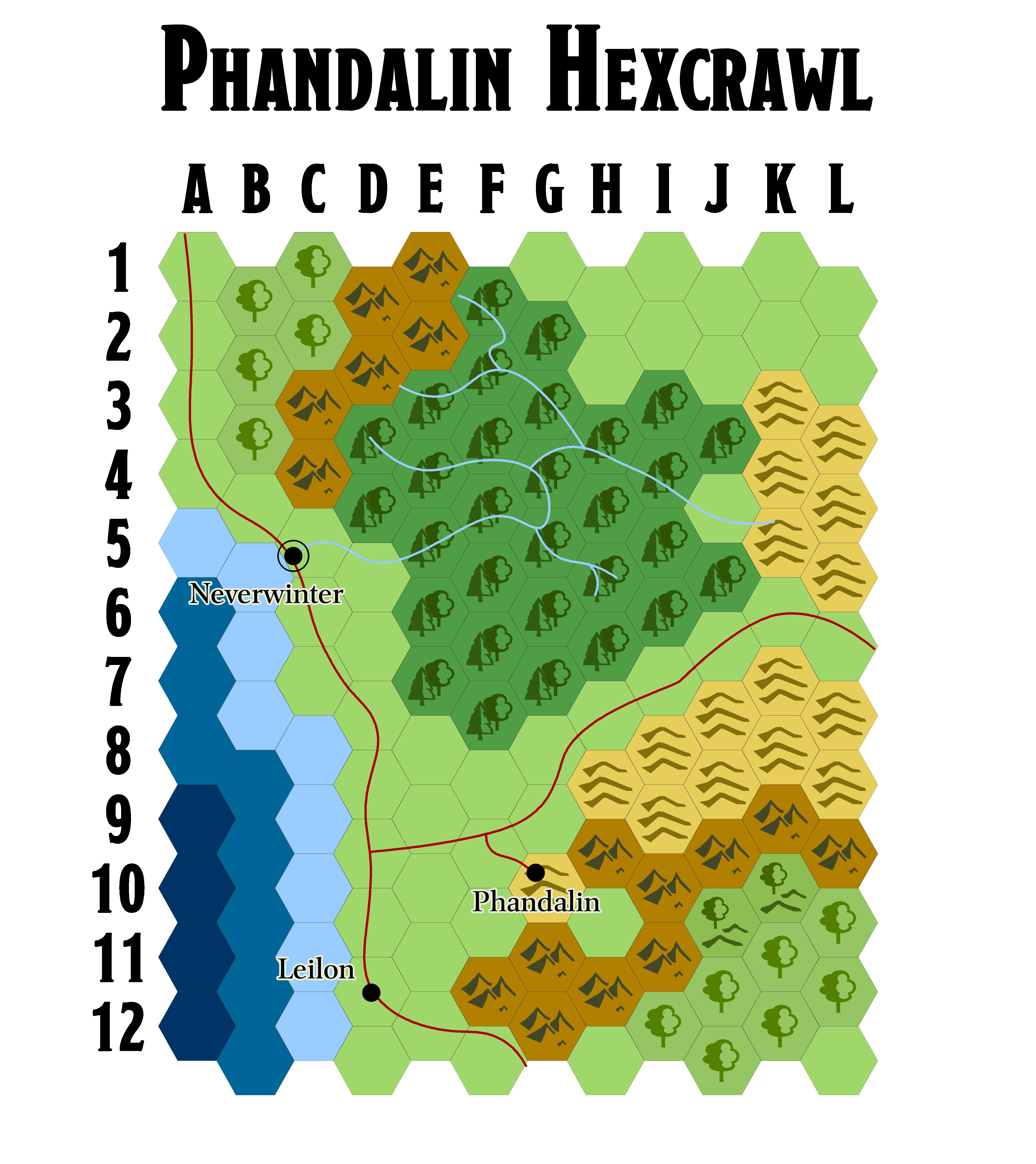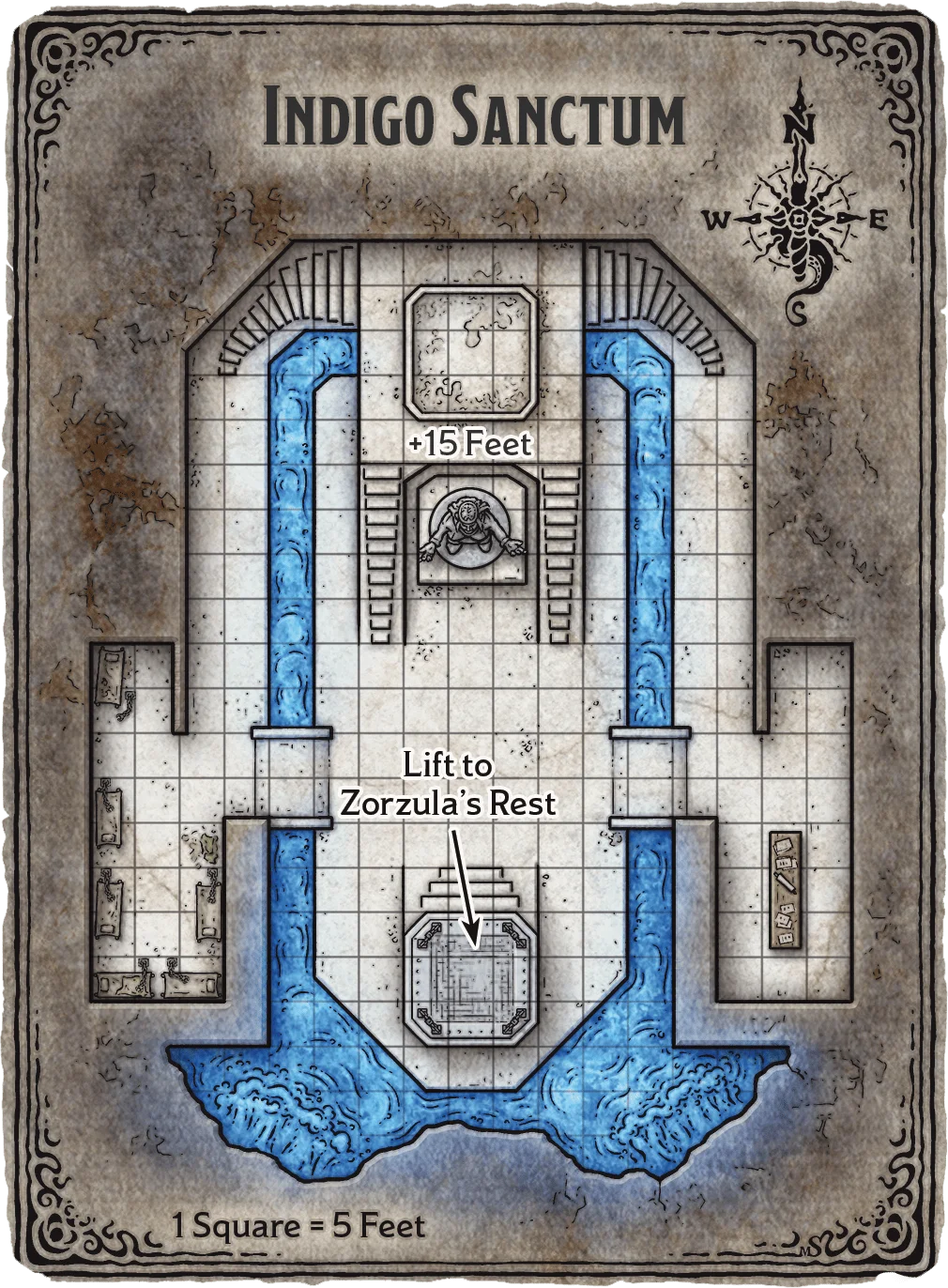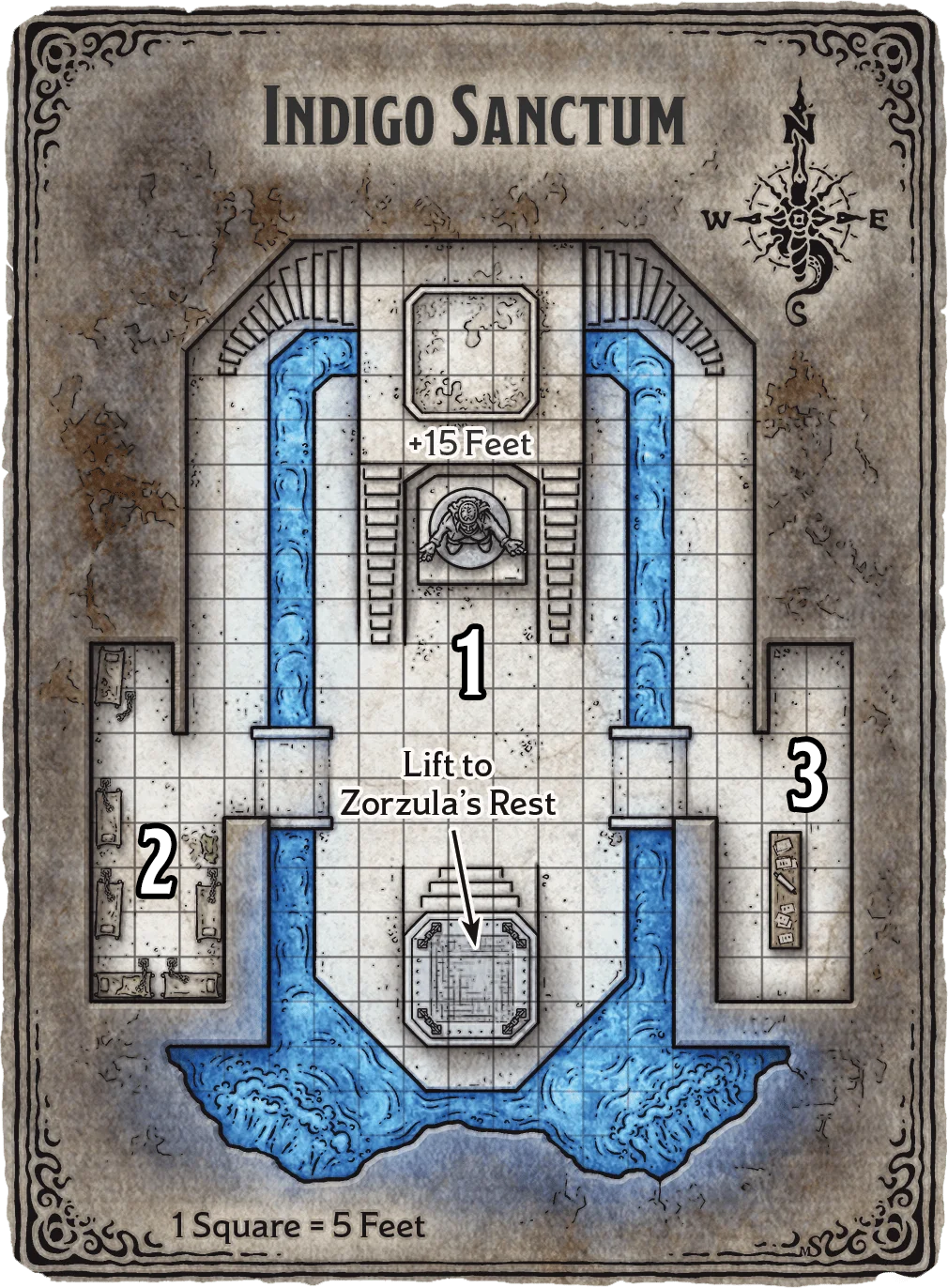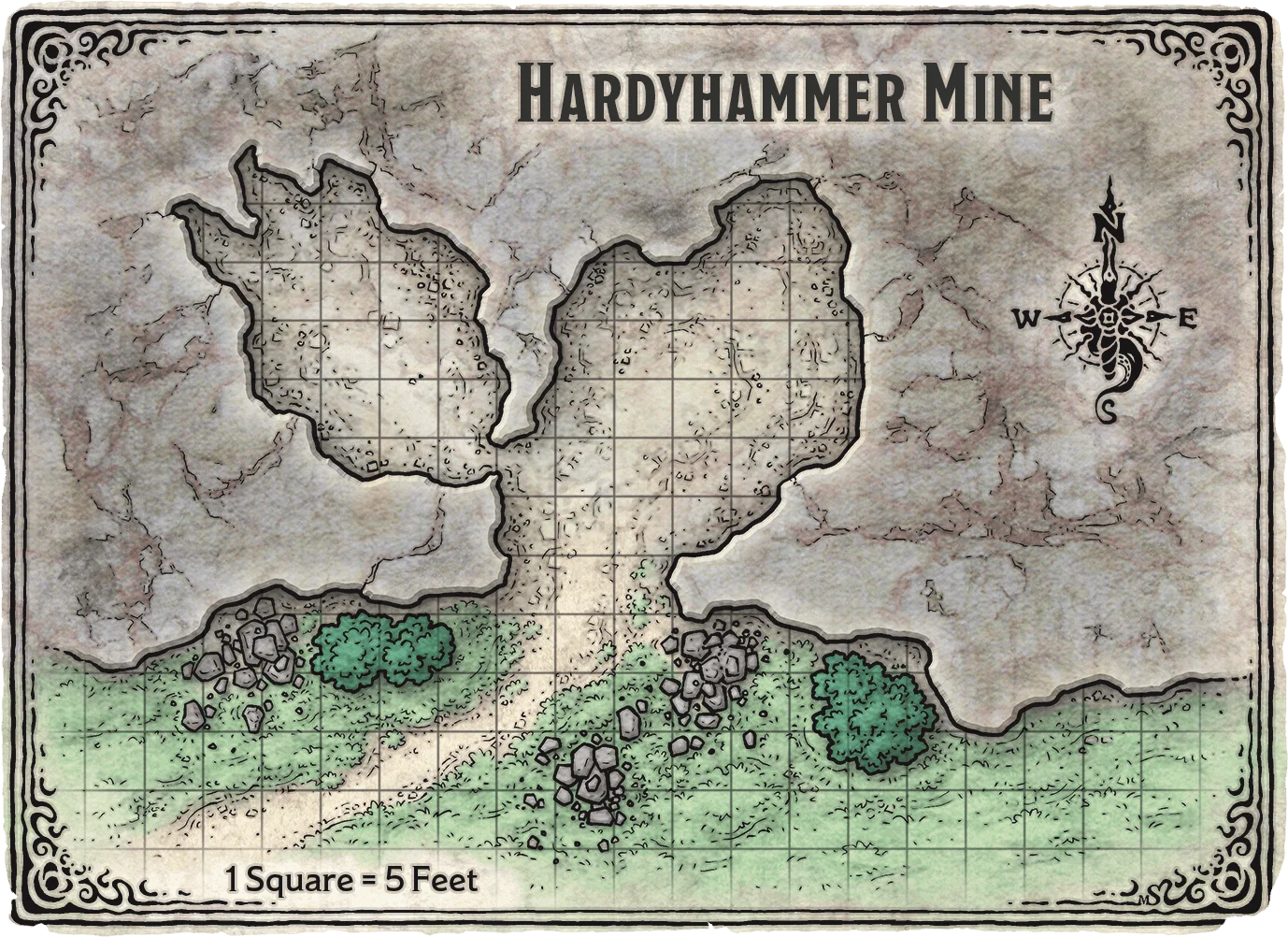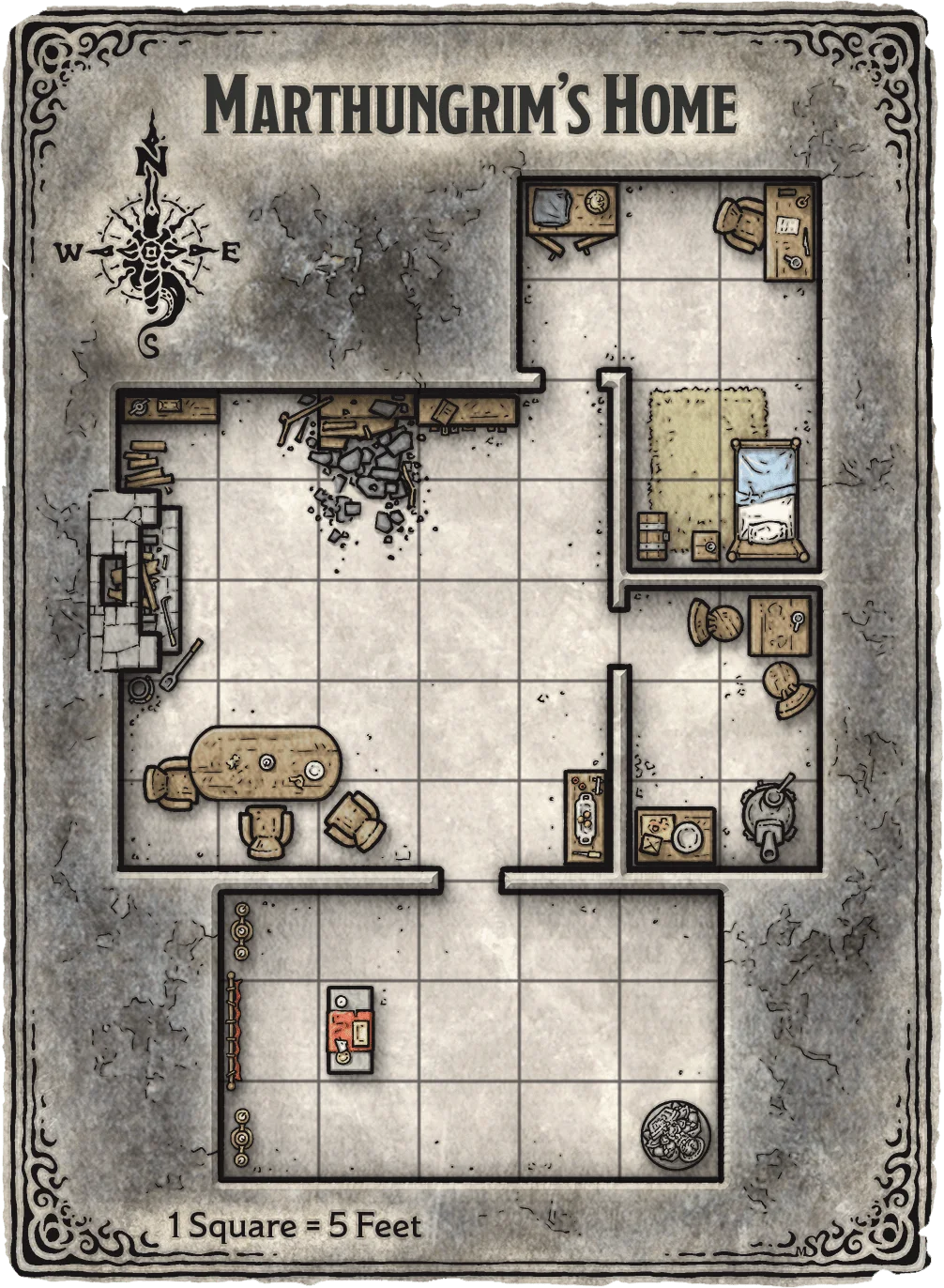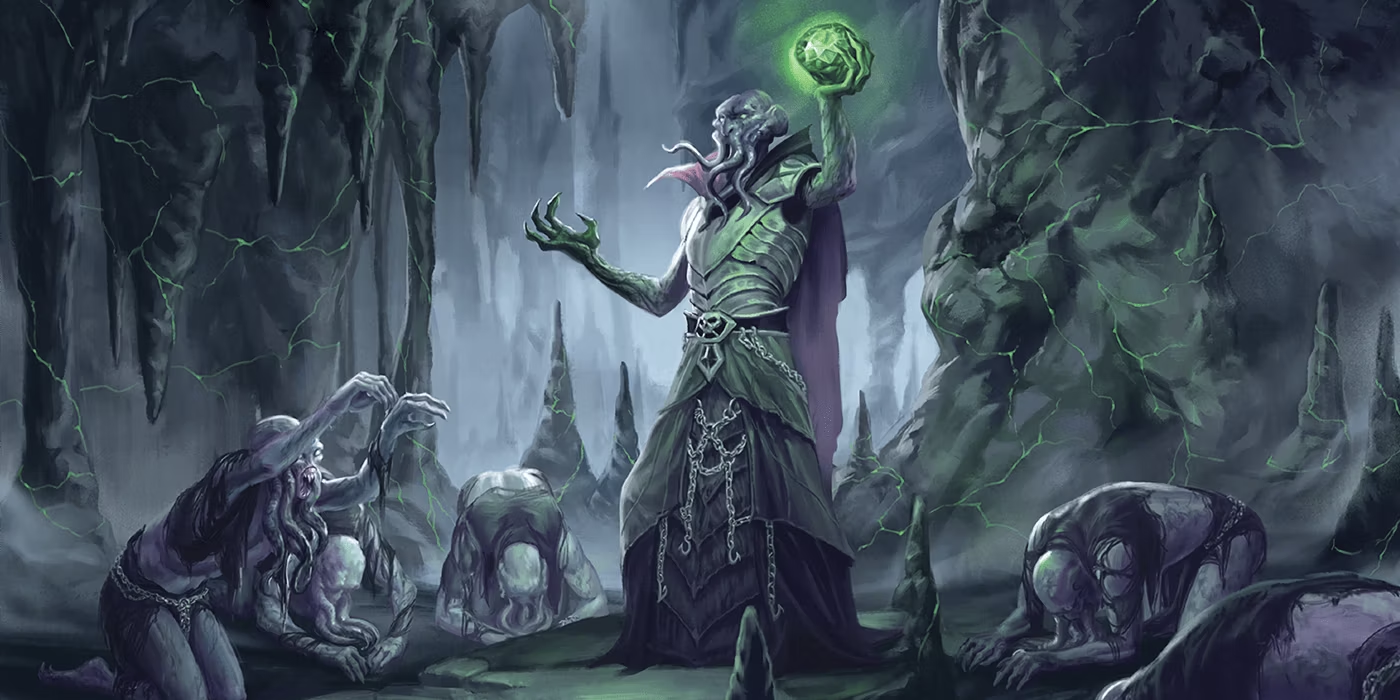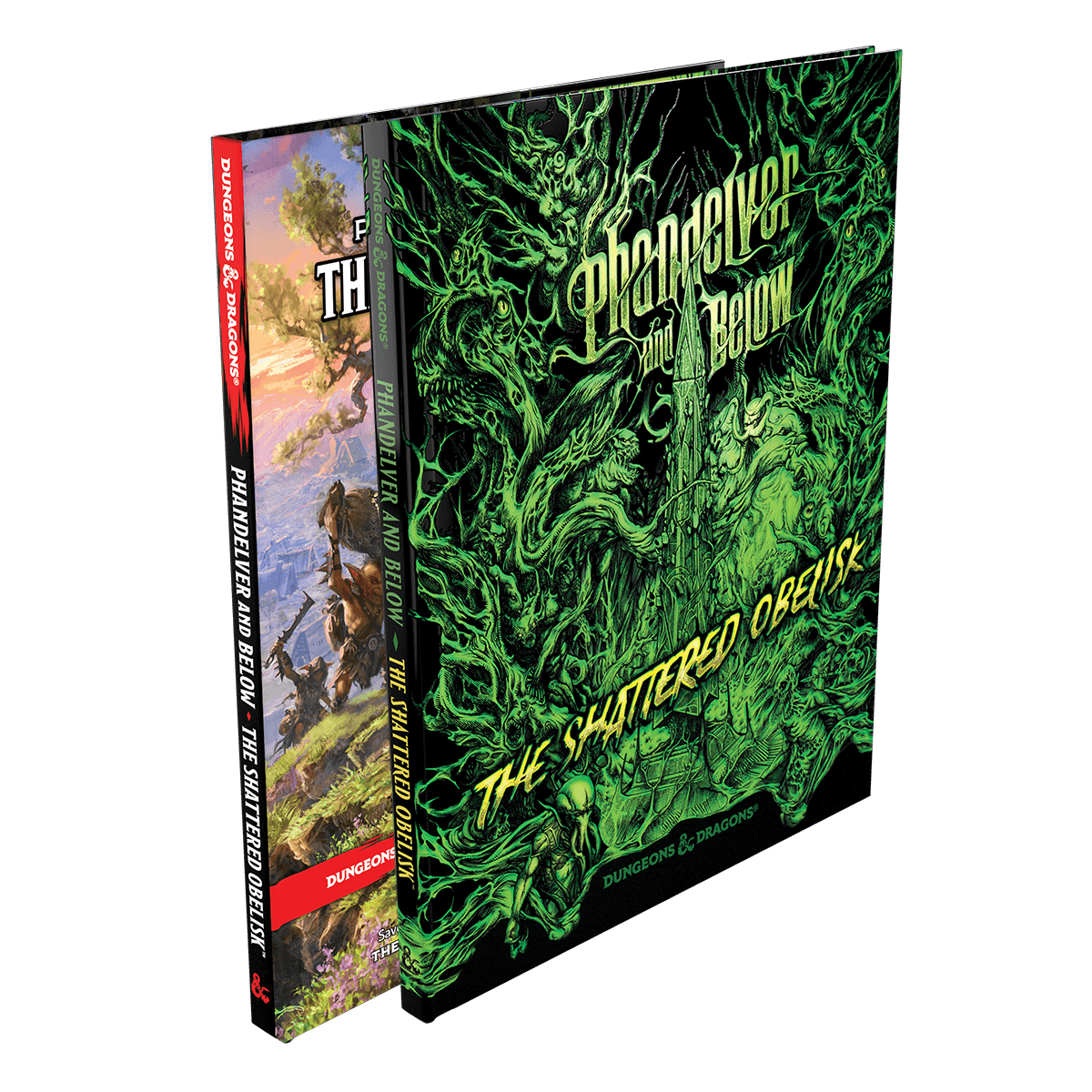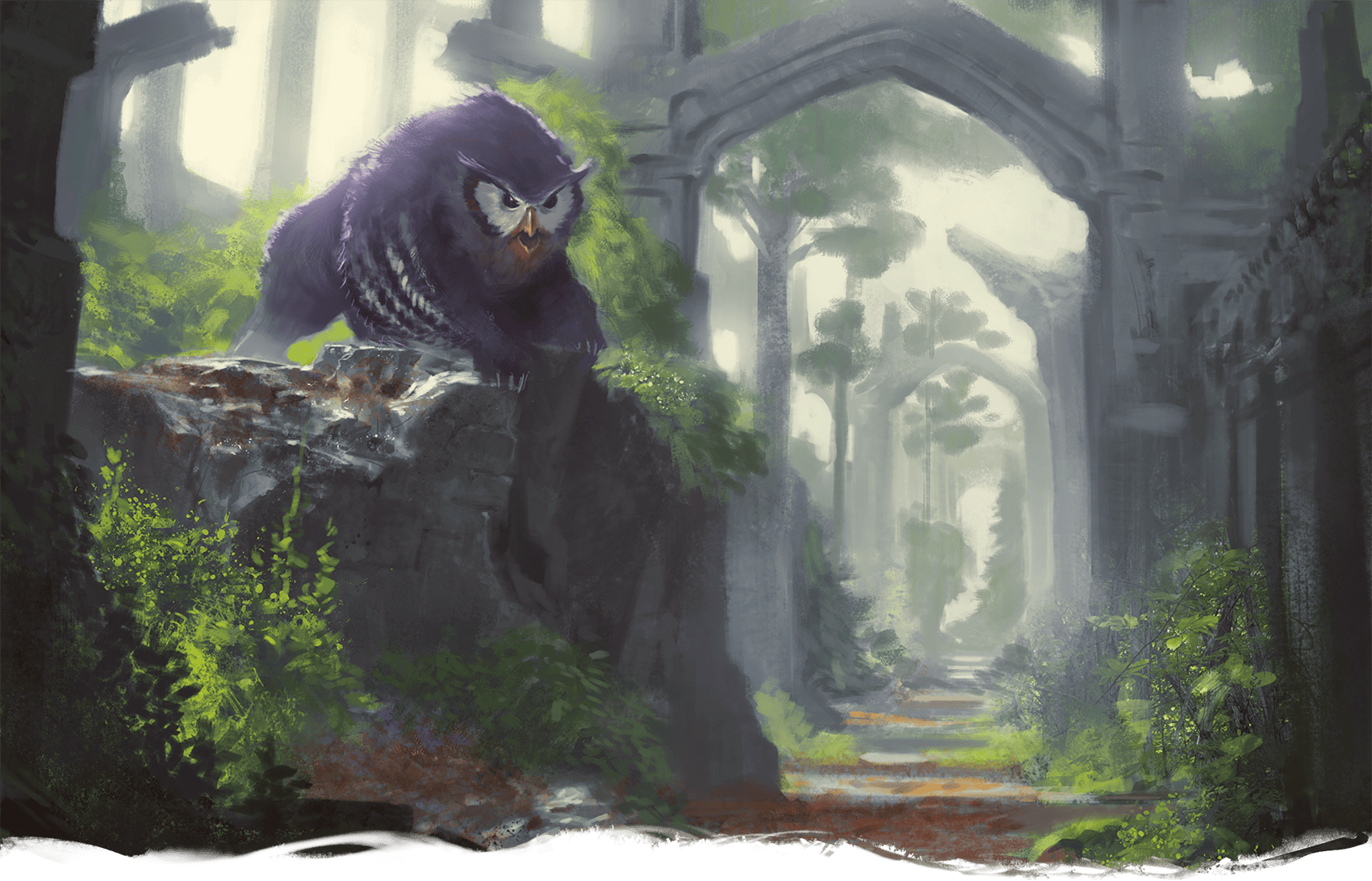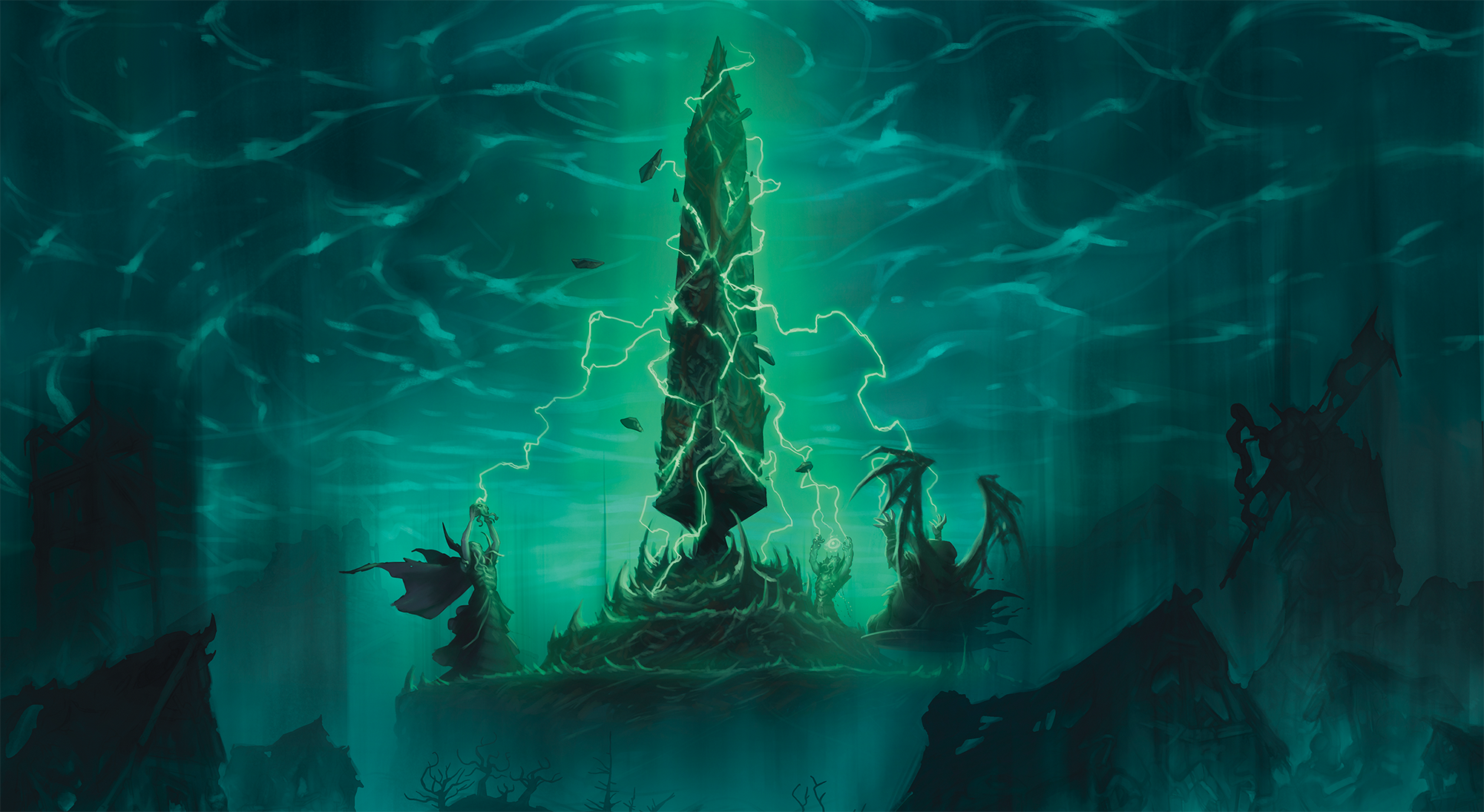
In my review of The Shattered Obelisk, I said that buying the book in the hopes that you could remix it would be a bad idea: The book would actually have a negative value compared to just reading the basic pitch and designing your own campaign with the same concept.
Nevertheless, the first thing several people asked me was: Will you be remixing The Shattered Obelisk?
Obviously, no.
So what are we doing here?
In addition to my remixes of adventures like Dragon Heist and Keep on the Shadowfell, I’ve also done a couple of Remixing essays, one for Hoard of the Dragon Queen and another for Call of the Netherdeep. These are basically How I Would Remix It, If I Were Going to Remix It. You still have to do all the heavy lifting, but insofar as you find my advice useful, this is my advice.
But I said you shouldn’t buy the book and it would have a negative value if you did!
So, again, what are we doing here?
Well… I did say you would be better off just reading the basic pitch and designing your own campaign with the same concept.
So let’s talk a little bit about what that might look like.
SALVAGING THE LOST MINE OF PHANDELVER
Before we dive into the concept of the The Shattered Obelisk, though, let’s briefly touch on the first half of the book, which is a badly marred reprinting/remastering of Lost Mine of Phandelver. If we wanted to salvage this part of the book, how would we do it?
Fortunately, this is pretty straightforward:
- Find a used copy of Lost Mine of Phandelver (from the 2014 Starter Set).
- Buy it.
- Run it.
That’s it.
Reclaiming Lost Mine of Phandelver from The Shattered Obelisk is literally just laboriously scraping the graffiti off. If we, sadly, get to the point where the only viable means of getting Lost Mine of Phandelver is in the altered form it takes in The Shattered Obelisk, hopefully there’ll be a wiki out there somewhere that will do the work of listing all the changes so that you can reverse them.
THE CONCEPT
Let’s start with the core concept we’re working with:
- A powerful obelisk was shattered and the pieces are scattered in the region around Phandalin.
- A group of mind flayers want to re-assemble this obelisk (or as much of it as possible) so that they can use it in a powerful ritual.
- The PCs need to race the mind flayers to obtain the various pieces of the obelisk. The more pieces the PCs stop the mind flayers from getting, the less powerful (or more difficult?) the mind flayer’s ritual will be.
What does the ritual do?
Whatever you want it to do. Here’s some quick brainstorming:
Something to keep in mind is that, unless your campaign structure makes it plausible that the mind flayers could actually win, their objective is only really significant for (a) setting stakes and (b) the cool lore you can pull into the campaign. So you’ll want to be make sure to build revelation lists to pull that lore in. It’ll be even better if you can make it actionable in some way: For example, the illithids are also collecting spelljammer components (and that gives a new vector for the PCs to track their activities). Or they’re collecting the various dragons scattered around the Phandalin region so that they can transform them once the ritual is complete. (The PCs might find a mind flayer team engaged with one of the dragons from Lost Mine of Phandelver or Dragon of Icespire Peak; or they might even be able to forge a draconic alliance in response to the mind flayers targeting them. This activity could also bring in the Cult of the Dragon as an additional faction.)
THE RACE FOR THE SHARDS
The core structure of the campaign is the race to claim the obelisk shards.
As written, The Shattered Obelisk has the mind flayers automatically grab four of the seven shards before the PCs can even get involved in the race; two more shards are claimed through a completely dissociated trigger; and the third is pursued by a mind flayer who is inexplicably stuck waiting for the PCs.
It’s underwhelming. But the problem probably largely boils down to the fact that the designers simply don’t have a good scenario structure for handling this. They can’t present the mind flayers as a truly active, responsive challenge to the PCs because they apparently don’t have the tools to do that.
Fortunately, we do have those tools.
Start by having a single fragment in the Phandalin region, the stealing of which is structured in a way that clearly reveals what’s going on. My suggestion would be to frame this after the conclusion of Lost Mine of Phandelver: The PCs have helped reclaim the Wave Echo mines. A little while later, the dwarves at Wave Echo find an obelisk shard and they bring it to Phandalin so that the PCs can help them figure out what it is.
Design Note: This hook directly protagonizes the PCs. It’s also a great way of signaling the transition from Tier 1 to Tier 2. The PCs aren’t just anonymous wanderers anymore. They’re local heroes who have built a rep for themselves and are now leaders and experts who are sought out by the community.
The dwarves disturbing the obelisk somehow brings it to the attention of the mind flayers, who dispatch their minions to steal it.
At the end of this sequence, there should still be a lot of unanswered questions about what exactly is going on — what the obelisk is, where it came from, who the mind flayers are, what they want, etc. Resolving this enigma will help drive the campaign forwards and get the players invested in solving these mysteries.
Structurally speaking, however, the key thing is that some combination of investigating the shard itself, the attempted/successful theft of the shard, and/or backtracking to Wave Echo and seeing the site where the dwarves pulled the shard from (which may have also been targeted by mind flayer operatives) points the PCs (and the mind flayer agents) in the direction of a second obelisk shard.
This triggers a Race for the Prize, which is a scenario structure where two or more groups are all pursuing the same McGuffin.
Design Note: We’re structuring the campaign this way — an initial shard that points to a single additional shard — to kind of “prime the pump,” because things are about to get really crazy. This initial phase will help prep the players for race-based activities, so that when we step things up in the next phase, they’ll have had time to grok the basics.
One key thing you’ll need to prep for this scenario structure is the team that’s competing with the PCs to grab the shard. The mind flayers probably aren’t doing this themselves, so you’ll want to figure out who their agents are.
In the original module, they use psionic goblins. I would recommend not doing that, unless you take the extra effort to connect them to the goblins in Lost Mine of Phandelver, because otherwise the players will probably assume there is a connection and create unnecessary confusion. Finding some other option — even if that’s just adding the word “psionic” to literally any other creature in the Monster Manual — will eliminate that confusion, and also offer a valuable change of pace. (We’ve already been fighting goblins for a bunch of sessions now; let’s fight something else for a while.)
The other thing is that these McGuffin-based scenarios tend to become more fun if there’s more than two factions involved. So you might want to think about who else might be interested in the Obelisk and toss them into the mix. (Zhentarim? Cult of the Dragon? Zariel cultists? Thayans?) Alternatively, maybe the mind flayers — while all being loosely aligned — are each competing to see which one can claim the most shards.
At the site of the second shard, you’re going to plant all the clues pointing to the remaining fragments. This will include a method to find the shards, because in addition to launching multiple Races to the Prize, this phase of the campaign will also kick off a McGuffin Keep-Away, as the factions (including the PCs) not only seek to claim new shards, but also steal shards that have already been recovered.
(How many additional shards should there be? That’s entirely up to you. I’m guessing the sweet spot is probably four to six.)
At some point you need to trigger your endgame. I see a couple of options here:
- Throughout the shard race, the PCs can start collecting clues revealing (a) the mind flayers’ intentions for the obelisk and (b) the location of their final ritual, giving the PCs a chance to take the fight to them.
- The PCs figure out how the obelisk ritual is supposed to work, and they’re able to stage their own ritual. Depending on what the mind flayer ritual is actually doing, this might put them directly in conflict with the flayers (their version of reality vs. the flayer reality); or they might actually be doing a counter-ritual. If this ritual doesn’t need to take place at the same location as the flayer ritual (the site where the obelisk was broken perhaps? or Netherese site of power? or the Phandelver spell forge?), I recommend some kind of schism in reality that can connect the PCs’ ritual to the flayer ritual and allow for a final confrontation.
And, of course, both of these might be true with the PCs being able to figure out their own strategy for bringing things to a conclusion.
LINKING PHANDELVER
Most of what we’ve discussed for our version of The Shattered Obelisk doesn’t require the adventure to be run as a sequel to Lost Mine of Phandelver. But if you are running it as a direct sequel, you’ll want to make the effort to add foreshadowing to Lost Mine that will help set the stage for The Shattered Obelisk.
I listed several possible options for this in my original review of The Shattered Obelisk, and I’ll repeat them here for convenience:
- The titular shattered obelisk is a Netherese artifact. The original adventure includes a Netherese archaeological expedition, so you could plant lore about the obelisks there.
- The titular lost mine of Phandelver includes the Forge of Spells, a site where dwarves once studied arcane secrets. Maybe they studied the Netherese obelisks!
- There’s a nothic in the Redbrands hideout, a type of creature with specific ties to the Far Realms, Vecna, and the mind flayers in this adventure. We could link him to the mind flayers, perhaps as an advanced scout in the region?
- The Spider, who is the main mastermind villain of Lost Mine of Phandelver, seeks the Forge of Spells. Maybe he could also be looking for pieces of the shattered obelisk, allowing us to plant lore in his lair. (This could also set up the Spider — or the organization they work for — as an additional faction during during the obelisk chase.)
I discuss other techniques for this sort of thing in The Campaign Stitch.
As an additional note, the published module also features a plot thread where the mind flayers kidnap a bunch of people from Phandalin. If you decide to do something similar, do yourself a favor and create a cast list for Phandalin, establish the characters on this cast list during Lost Mine of Phandelver, and then kidnap NPCs the PCs have established relationships with.
For a completely different alternative, you could spread the obelisk fragments throughout the existing locations of Lost Mines of Phandelver (and/or Dragon of Icespire Peak): Whichever piece the PCs happen to discover first becomes the instigator of the obelisk chase, and the two adventures will become much more tightly interwoven as a Tier 1 epic.
As an alternative to this alternative, you might have three or four of the shards scattered around existing locations in the Phandalin region:
- The first is a curiosity.
- The second forms a pattern.
- At the third, there’s a mind flayer scouting team present.
- Then a mind flayer team tries to steal a shard.
This lets you spread out the initial lore dump a little more, hints at the machinations of the mind flayers, and sets the stage for when things explode with the discovery of additional shard locations.
MAXIMUM SALVAGE EFFORT
“But I already bought The Shattered Obelisk! And I want to get some use out of it!”
That’s fair.
Here’s my recommendation: Don’t try to salvage everything.
Instead, identify the stuff that you personally find fantastic and nick it. Maybe that’s an encounter. Maybe it’s a map. Maybe it’s a whole dungeon.
I’m not going to try to guess what that stuff is for you. I know what the one or two gems in the dung heap were for me, personally, but that may or may not match your list.
The other thing to keep in mind is that you don’t need to do a full rebuild of The Shattered Obelisk to do this. You could grab your favorite stuff and build a completely new campaign. Or you could likely just add it to a Storm King’s Thunder or Spelljammer campaign.
Which is ultimately my point here: There’s so much amazing D&D content out there — and even more lurking in your imagination and just waiting to be released — that there’s just no reason to think that you need to save the soul of every $60 hardcover from Wizards of the Coast.
ADDITIONAL READING
Review of The Shattered Obelisk
Phandalin Region Map – Label Layers

